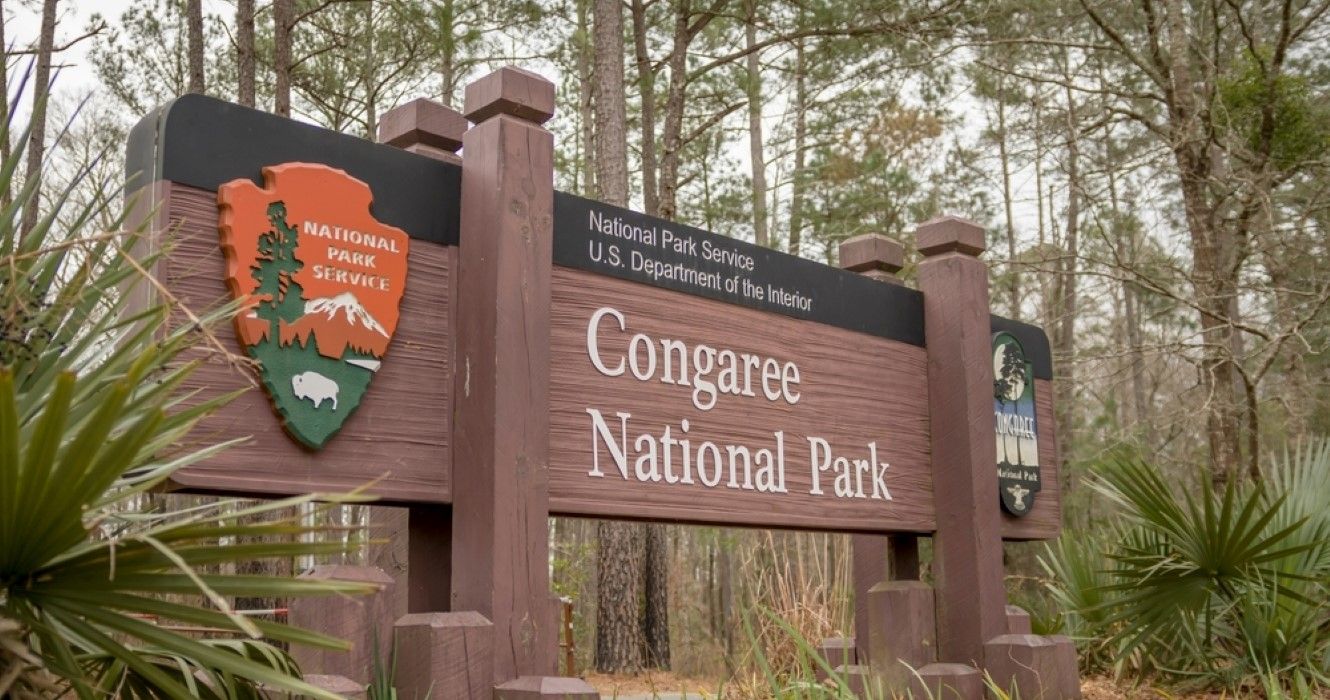Just 30 minutes away from the capital city, Columbia, and with over 25 miles of hiking trails, 2.4 miles of boardwalks, and a beautiful canoe trail, there are many ways to explore beautiful Congaree National Park. The easy wheelchair-accessible Boardwalk Loop trail from the Harry Hampton Visitor Center is a wonderful introduction to the park and takes visitors through old-growth bottomland hardwood forest and past towering loblolly trees.Of the 63 National Parks in the United States, Congaree is one of the least visited, so here are ten things you might not know about this hidden gem in South Carolina!
10 Congaree National Park Is 26,000 Acres
Congaree National Park covers just 26,000 acres of wilderness, making it the 6th smallest National Park in the United States after Gateway Arch, Hot Springs, American Samoa, Virgin Islands, and Indiana Dunes.
9 Congaree Only Became A National Park In 2003
Despite being given International Biosphere Reserve status as part of the South Atlantic Coastal Plain by UNESCO back in 1983, Congaree was only made a National Park on November 10, 2003, making it one of the twelve most recent National Parks, along with New River Gorge National Park in West Virginia and White Sands National Park in New Mexico.
8 Congaree Is The Largest Area Of Old Growth Bottomland Hardwood Forest In The US
Congaree National Park is home to the largest area of old-growth bottomland hardwood forest left in the United States, found in Congaree Swamp.
7 Congaree Is A Floodplain, Not A Swamp
Despite its former name of 'Congaree Swamp National Monument, Congaree is not actually a swamp; it's a floodplain. A floodplain is a low-lying area near a river that is covered by water for part of the year, whereas a swamp is permanently covered with water.
6 Congaree Is Home To Champion Trees
Congaree's floodplain forest has some of the highest temperate deciduous forest canopies in the world, with an average height of over 100 feet, and is home to some of the tallest and largest loblolly pines and some of the oldest cypress trees in the United States. Champion trees are the largest tree specimens found in the United States reported by the American Forests on the National Register of Champion Trees. Congaree currently has 25 different kinds of trees that are the champions of their species, and no other area in North America has a larger concentration of champion trees.
5 Home To Synchronous Fireflies
Seeing the twinkling lights of fireflies in the evening is a common sight during the warm summers in the southern states, but Congaree National Park is home to a rare species of firefly known as synchronous fireflies. Unlike typical fireflies, synchronous fireflies flash together at the same time, creating a mesmerizing display. Only three species of synchronous fireflies can be found in North America, and Congaree is one of the few places visitors can experience these awe-inspiring creatures every year for approximately two weeks between mid-May and mid-June.
4 A Variety Of Trees Live In Congaree
Although Congaree is renowned for its giant loblollies and ancient cypress trees, there is actually a huge variety of tree species found across the park, including bald cypress, elm trees, water tupelo, American Holly, bitternut hickory, box elder, cherry bark oak, green ash, laurel oak, pawpaw, red maple, sweet gum, and water hickory.
3 It Is Also Home To A Variety Of Animals
There is also an abundance of wildlife to be found in this beautiful National Park, including snakes, armadillos, bobcats, coyotes, wild dogs, deer, turkeys, foxes, wild pigs, and river otters. It is also a sanctuary for many endangered plants and animals, including the Red-Cockaded Woodpecker. Weston Lake is roughly halfway around the boardwalk trail and is a perfect spot to spot slider turtles and river cooters, and maybe even a snake or alligator!
2 There Are 10 Hiking Trails In Congaree
The hiking trails in Congaree range from 0.6 miles to 11.1, and the majority start from the Harry Hampton Visitors Center, making that a perfect place to start your Congaree adventure. The easy wheelchair-accessible 2.6-mile Boardwalk Loop Trail is a wonderful introduction to the park, the 4.5-mile Weston Lake trail has great views of Cedar Creek, where visitors might be lucky enough to spot otters and wading birds, and the 7.1-mile Oakridge Trail is great for spotting deer and wild turkey. No matter your fitness level, there is a hike to suit everyone.
1 Visitors Can Experience The Park By Water
Visitors can canoe or kayak throughout Congaree National Park, but those wanting a multi-day experience should try the 50-mile-long Congaree River Blue Trail. This trail was designed as a collaborative effort between local, state, and federal agencies to provide public access to the Congaree River, which starts from downtown Columbia and ends at Route 601 near the confluence of the Congaree and Wateree rivers. This 2-3 day trip offers paddlers the chance to see a variety of wildlife, including alligators and bald eagles.

